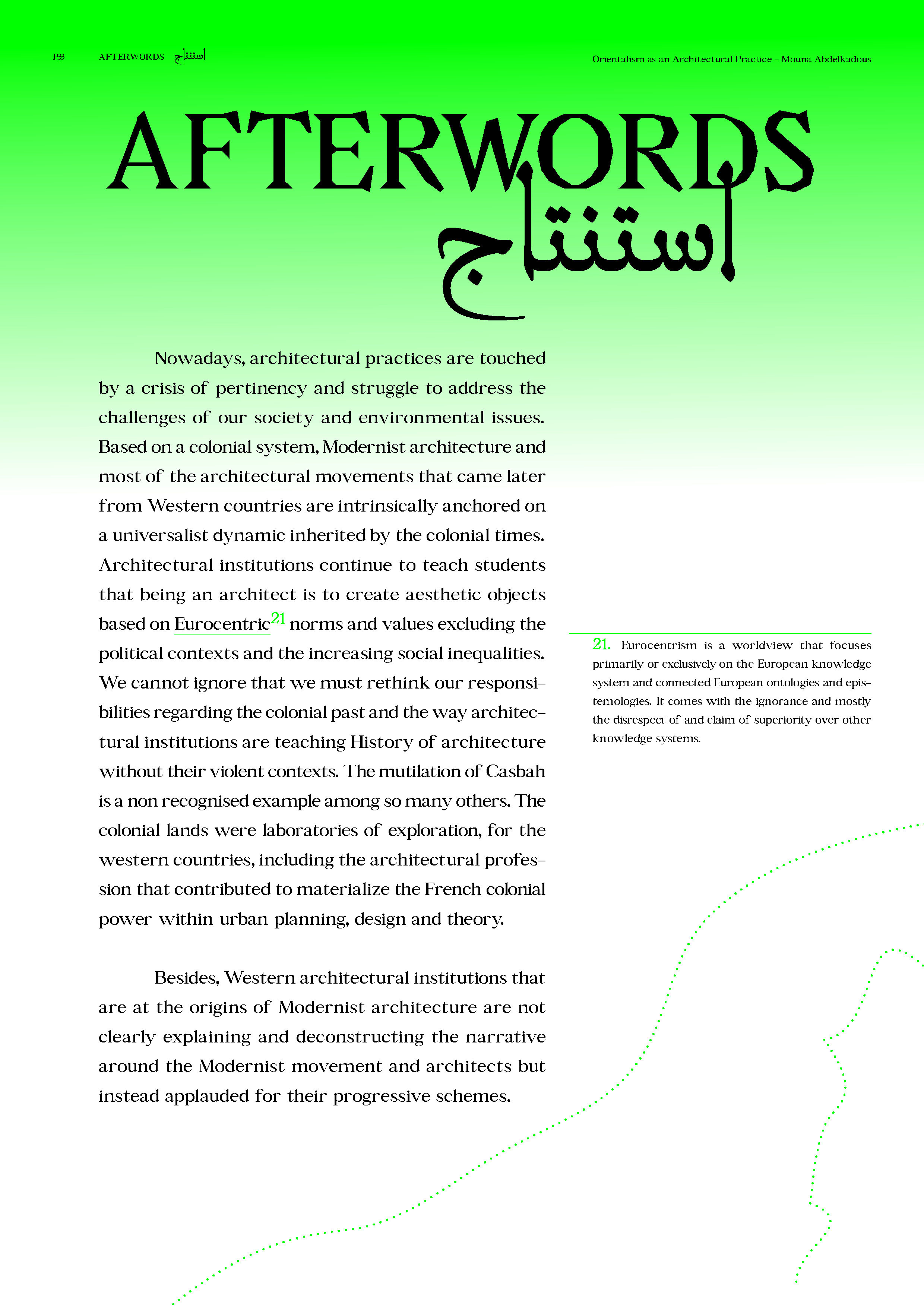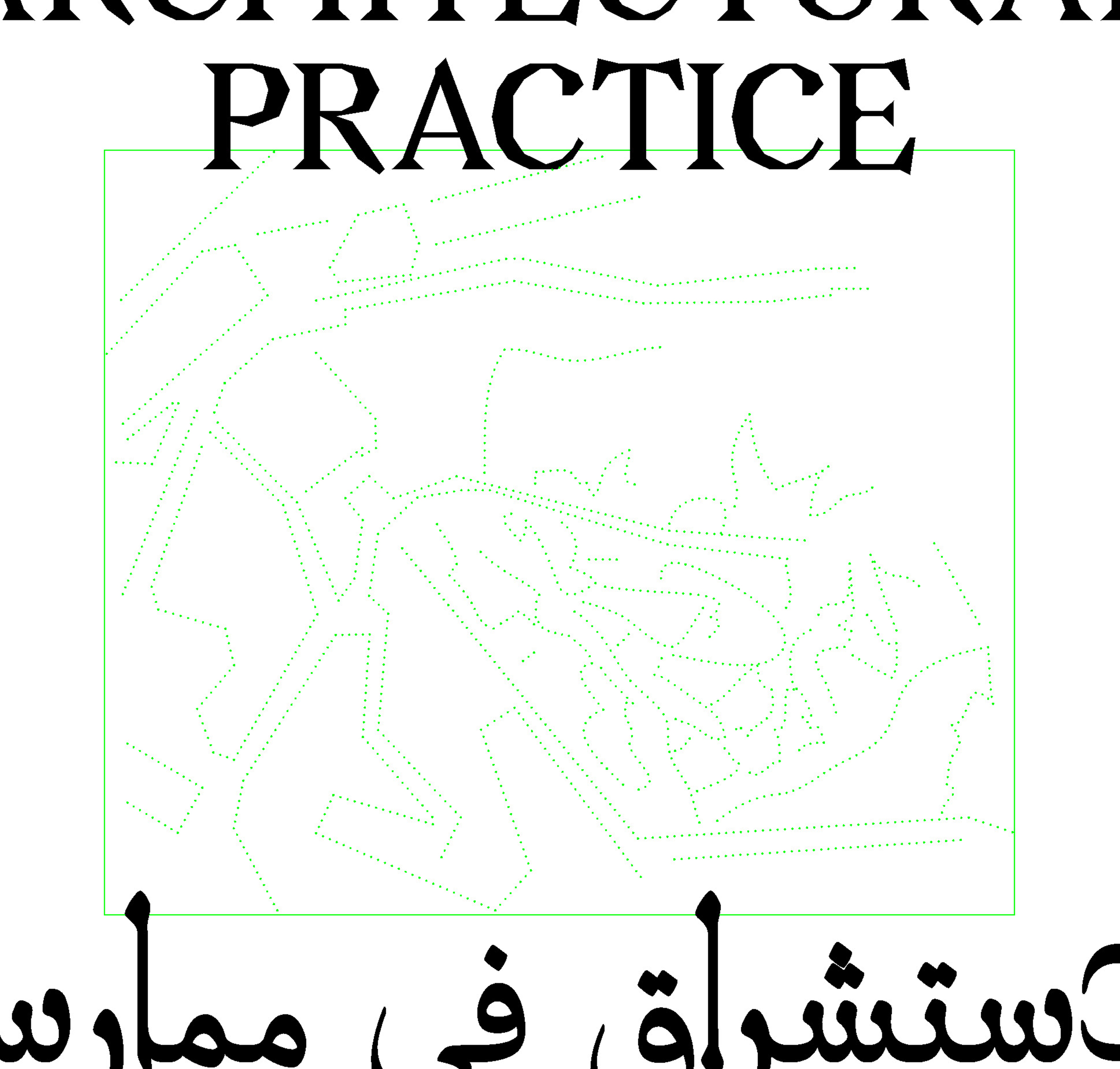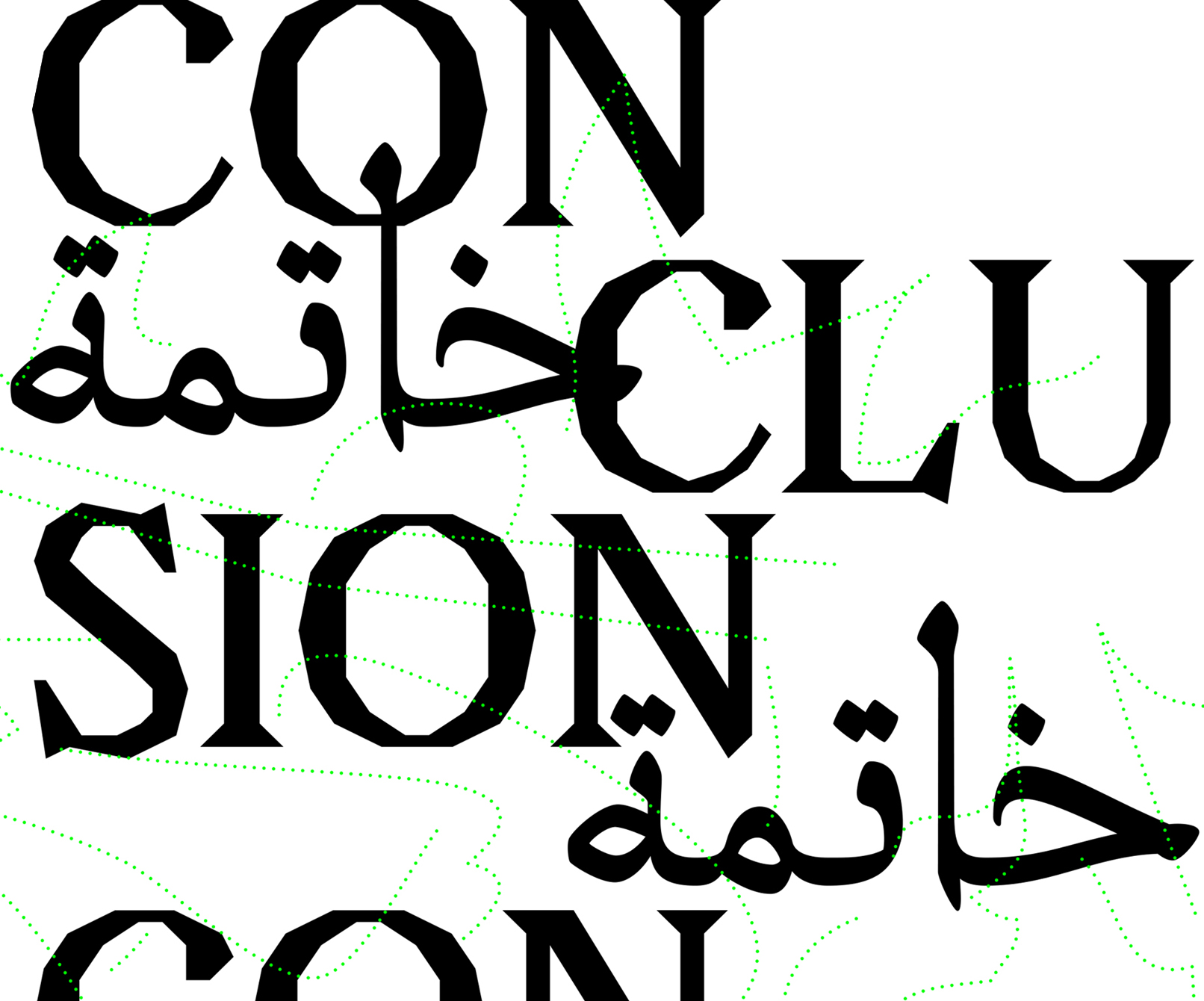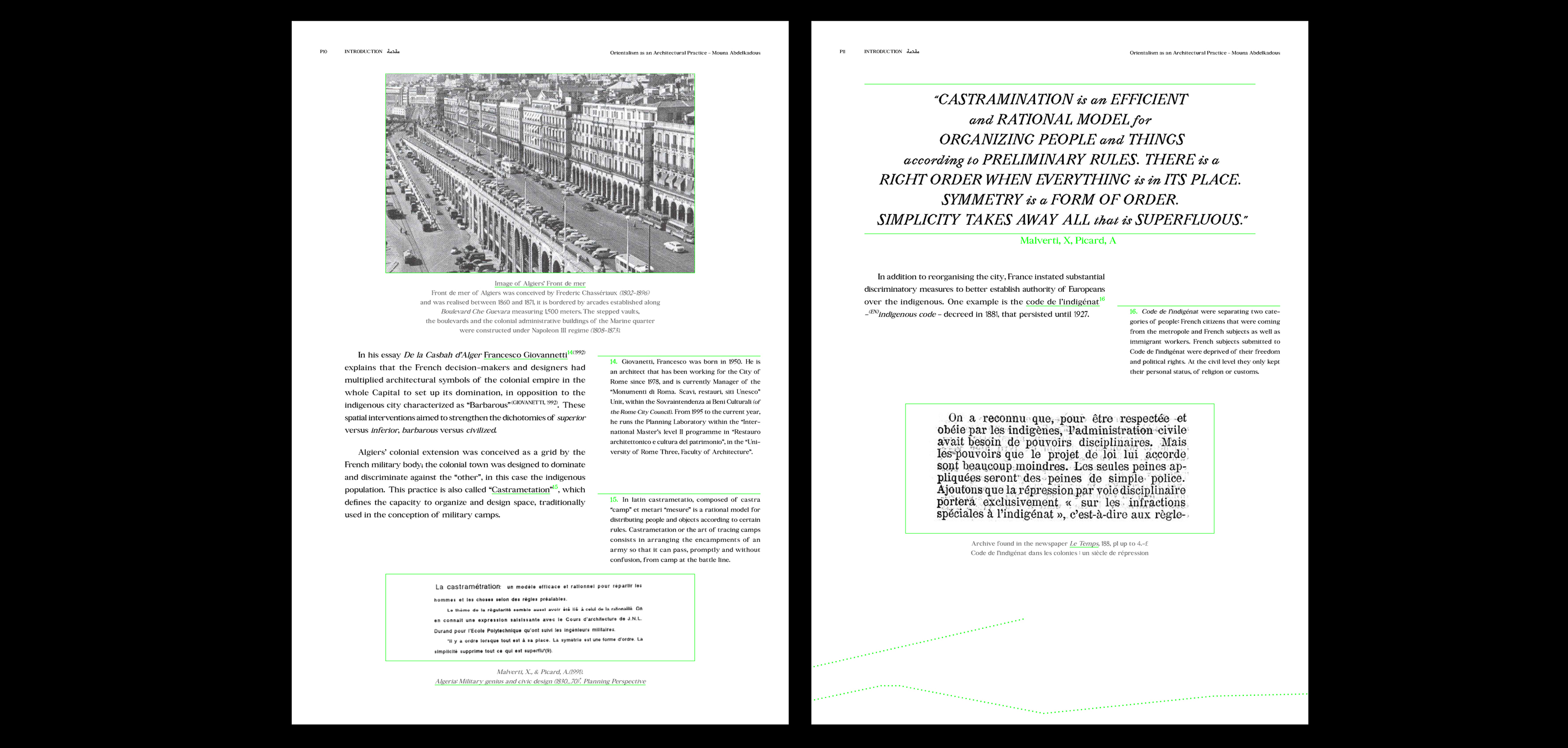2021(SE)
Orientalism as an
architectural practice
Editorial design for the architect and researcher Mouna Abdelkadous. Her work focuses on how French colonial authorities used Orientalist tactics around the vernacular architecture of the Casbah of Algiers.

Publication’s layout
Mouna Abdelkadous’ work looks at the city of Algiers and how colonial power infrastructures transformed the city around the Casbah, remain of the vernacular architecture. In parallel, she shows that Orientalism*, as a cultural stereotype of the “East” by the “West”, played a big role in the destruction and restructuration of colonized cities.
For a year, we remained in discussion with Mouna Abdelkadous, accompanying every step of the publication. We shared many online documents –giving each other notes– so we wanted to keep that process in the visual output. We decided to give a visual importance to the “footnote” which became “side notes”, easy to find and read.
*Orientalism as described by Edward W. Said is a worldview, representation, and academic tradition based upon the distinction between the ‘Orient’ and the ‘Occident’, and is used as a powerful political instrument of domination.
For a year, we remained in discussion with Mouna Abdelkadous, accompanying every step of the publication. We shared many online documents –giving each other notes– so we wanted to keep that process in the visual output. We decided to give a visual importance to the “footnote” which became “side notes”, easy to find and read.
*Orientalism as described by Edward W. Said is a worldview, representation, and academic tradition based upon the distinction between the ‘Orient’ and the ‘Occident’, and is used as a powerful political instrument of domination.




Cover and title pages
The first part of the publication is looking at the colonial architecture of Algiers. The French colonial empire built a grid system, structured for military tanks, cars and the construction of Haussmanian buildings. It did so all around the Casbah, in opposition to its vernacular architecture: narrow streets, distributing more intersections, and Moorish houses with a patio in the center. As we go through the research, Mouna Abdelkadous dives into the architectural structures of the Casbah, colonial laws and military decisions to segregate indigenious populations from new European settler. She draws a connection between Orientalism and tourism, in a larger colonial discourse. The research finishes on the importance of indigenous architecture as examples of sustainable constructions, compatible with nature and climate change in a time of global warming.
We wanted to visually translate the different parts of the research. Taken from Mouna’s architecture plans and today’s map view of Algiers, we drew spatial lines as a continuous thread of the publication. The first title pages show the lines of the areal plan of the colonial constructions, straight and angular. Then, following the chapters, we focused on the Casbah of Algiers, zooming into its streets, as the titles take more space, deconstructed.
We wanted to visually translate the different parts of the research. Taken from Mouna’s architecture plans and today’s map view of Algiers, we drew spatial lines as a continuous thread of the publication. The first title pages show the lines of the areal plan of the colonial constructions, straight and angular. Then, following the chapters, we focused on the Casbah of Algiers, zooming into its streets, as the titles take more space, deconstructed.




Fonts
Some parts of the publication are translated in Arabic by Meriem Lakhssassi. We used a combination of fonts. For the main text and translations we used Shahrazed, from Ammar Bouras. For titles, numbers and quotes, we used the open source font Avara, a collaboration between Raphaël Bastid, Wei Huang, Lucas Le Bihan, Jérémy Landes and Walid Bouchouchi.









© 2024